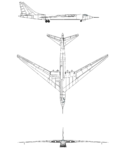- Thread starter
- #101
Since the runway he was landing on didn't appear to be sliding off to the right? To correct, they'd have to crab slightly to the right to stay with the ship. I assume you'd treat this just like a crosswind?Actually, they weren't flying into a crosswind. Drill was (is) to steer the ship a few degrees off the wind to put the airflow as close as possible to right down the angle. . . . This is what nugget aviators hitting the boat for the first time after days and days of FCLP (Field Carrier Landing Practice) have the most difficulty adjusting to.
While this is a rather silly question: When it comes to the deck pitching and stuff, are aviators supposed to simply act as if the deck will line itself back up and resist any efforts to "chase the deck"?

